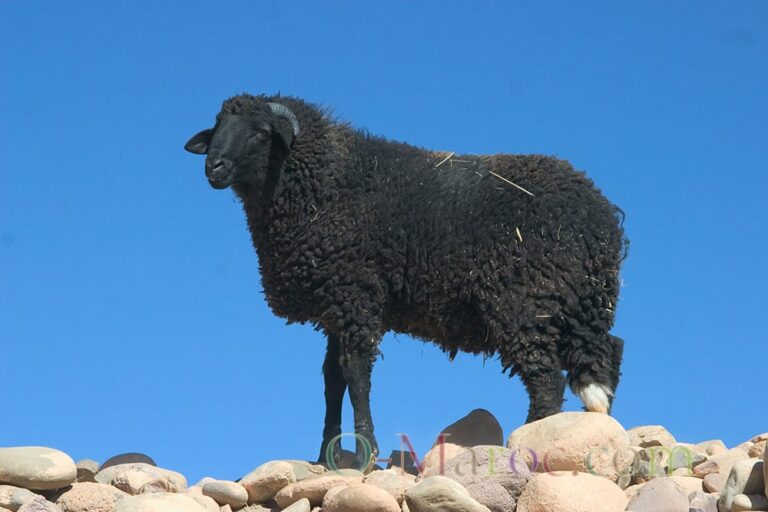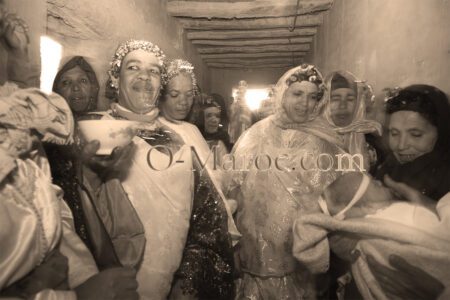Anougoud is the sheep on its four legs and the meat of the animal once it has been killed.
It’s a young male sheep, the sheep of Eid, the one you’ll hear bleating in a few days’ time in the courtyard or on the terrace of the building, if you live in town, so anougoud n’ tfaska, the sheep of the festival.
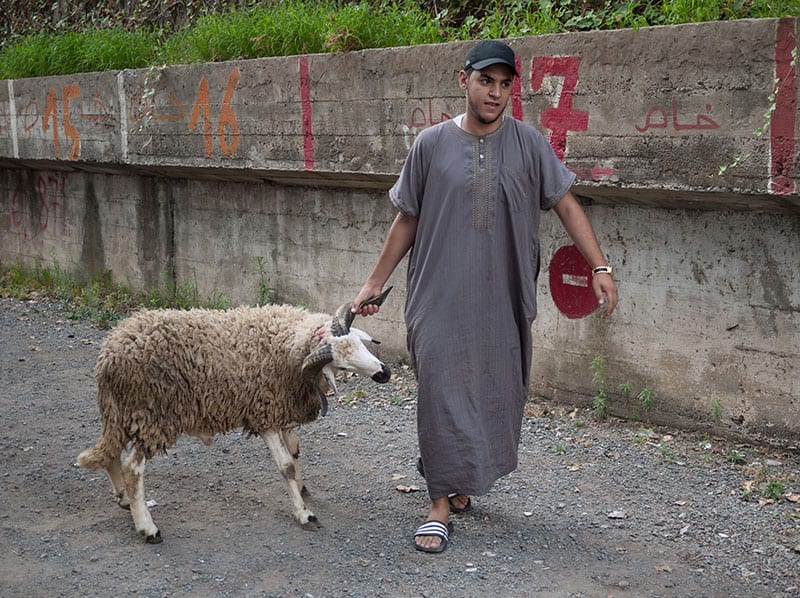
The tastiest species are those without horns, at least that’s what they say in the south. But the hornless sheep is not the one that impresses the neighbours the most! So you’ll soon see what matters most to the families around you. And the horned sheep has a practical advantage!
As with most animals, white animals are more valuable for the quality of their wool.
So there’s also ⴰⵥⵕⵕⵉⴼ, azrrif, the white-headed sheep, and ⴰⴱⵔⵇⵉ, abrqui, the black- or brown-headed sheep.
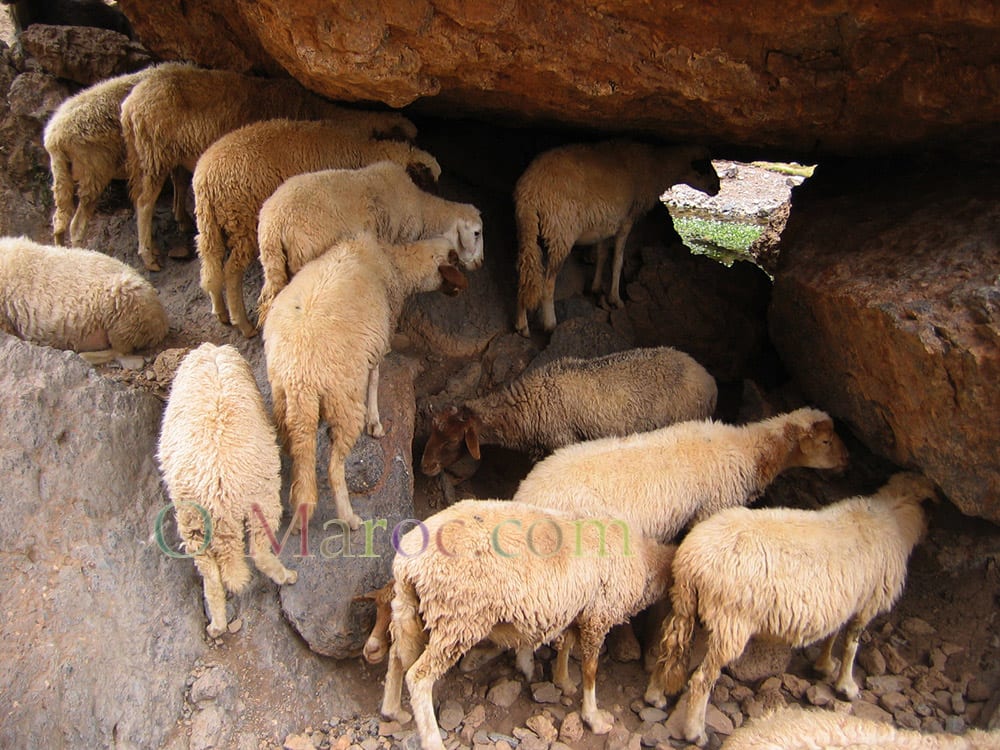
In everyday life, we’re more likely to talk about :
- Izimmer, ⵉⵣⵉⵎⵎⵔ, which refers more specifically to the ram.
- Ahulli ⴰⵃⵓⵍⵉ
- and Akrri ⵓⴽⵔⵔⵉ or Arrag ⴰⵔⵔⴰⴳ, who I have very rarely heard, at least in the Middle Atlas and the Draa Valley.
There are a lot of words for girls too:
Tilli, ⵜⵉⵍⵉ is the most common word, at least for the Aït Atta.
As with the males, a distinction is made on the basis of colour, with a slight additional distinction between Tabrqiyt ⵜⴰⴱⵔⵇⵉⵢⵜ, the ewe with the black-spotted head, and taɣcwit, ⵜⴰⵖⵛⵡⵉⵜ, the ewe with the all-black head.
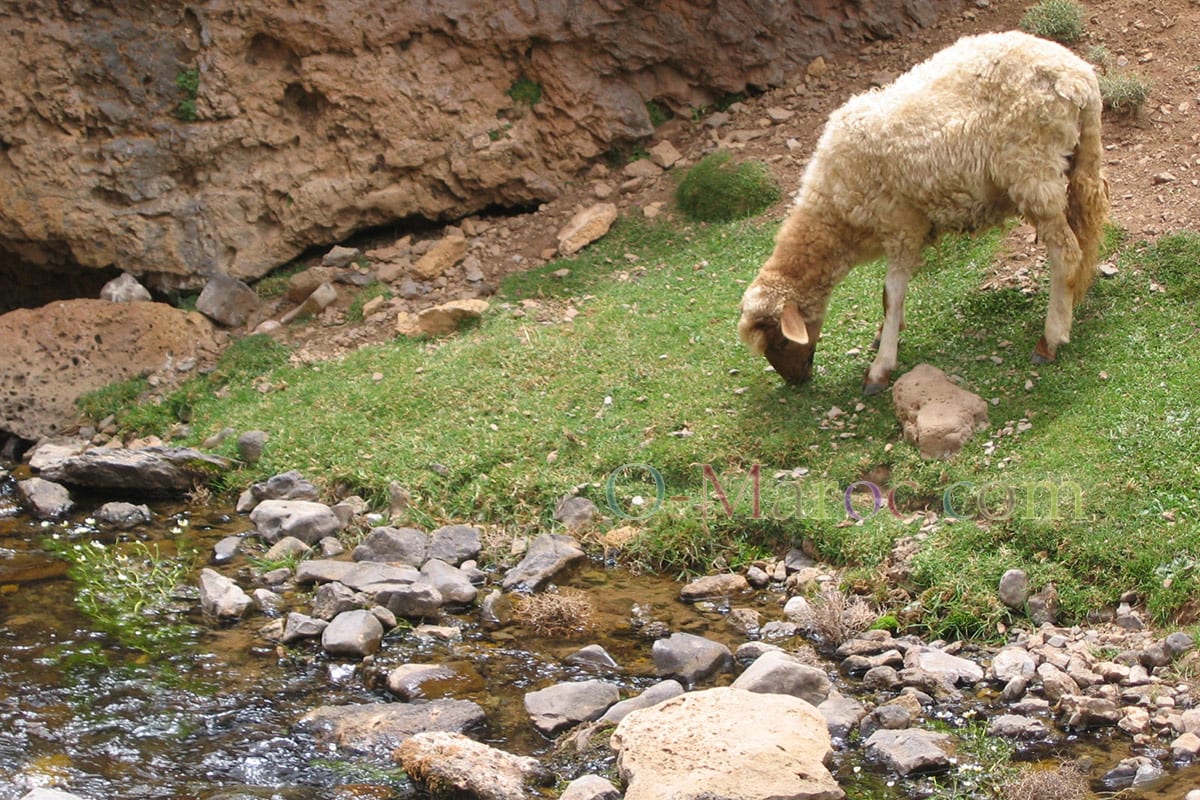
Ttasqqasbart, ⵜⴰⵙⵇⵇⴰⵙⴱⴰⵔⵜ is the troublesome sheep, the one that wanders away from the flock to walk on its own, and whose independence tires the shepherd! Indeed, the flock can easily decide to follow her, just because she is the first to show a new direction.
We also see Tahruyt ⵜⵀⵔⵓⵢⵜ or Tahrucht ⵜⴰⵀⵔⵓⵛⵜ and Tikhsi ⵜⵉⵅⵙⵉ . Again, these are words I’ve rarely heard, and they’re probably used in other regions. Tikhsi, for example, is used by at least two tribes of the Aït Yafelman confederation (the great historical enemies of the Aït Atta), i.e. the Aït Moghad (towards Goulmima) and the Aït Hliddou (not to be confused with the Aït Hadiddou, towards Imilchil).
Finally, for lambs, we use :
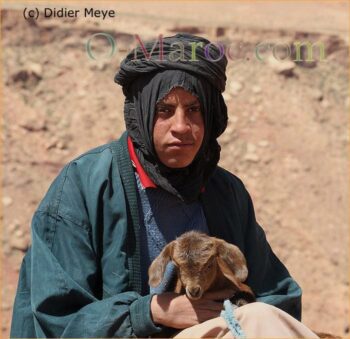
- Izmer, ⵉⵣⵎⵔ , Izimmer’s grandson
- Ilifiɣ, ⵉⵍⵉⴼⵉⵖ, when just born (also used for kids)
- Ala, ⴰⵍⴰ for the lamb calf (also used for the year’s foliage)
- Aɛlluc, ⴰⵄⵍⵍⵓⵛ (which also refers to the little calf)
- Alqqaɣ, ⴰⵍⵇⵇⴰⵖ (also meaning “tender”)
- Ikrou, ⵉⴽⵔⵓ which also means “child”.
According to Islamic rite, Anougoud – ⴰⵏⵓⴳⵓⴹ must be six months old and have the dentition of a young animal, or, at worst, be a sheep of the year. It must be weaned.
It is therefore also, “technically”, a lamb, at least in French since the lamb is less than a year old, but in Morocco, the word is not used in this sense.
Plurals
In Tamazight (Amazigh language), feminine nouns are also often collective nouns.
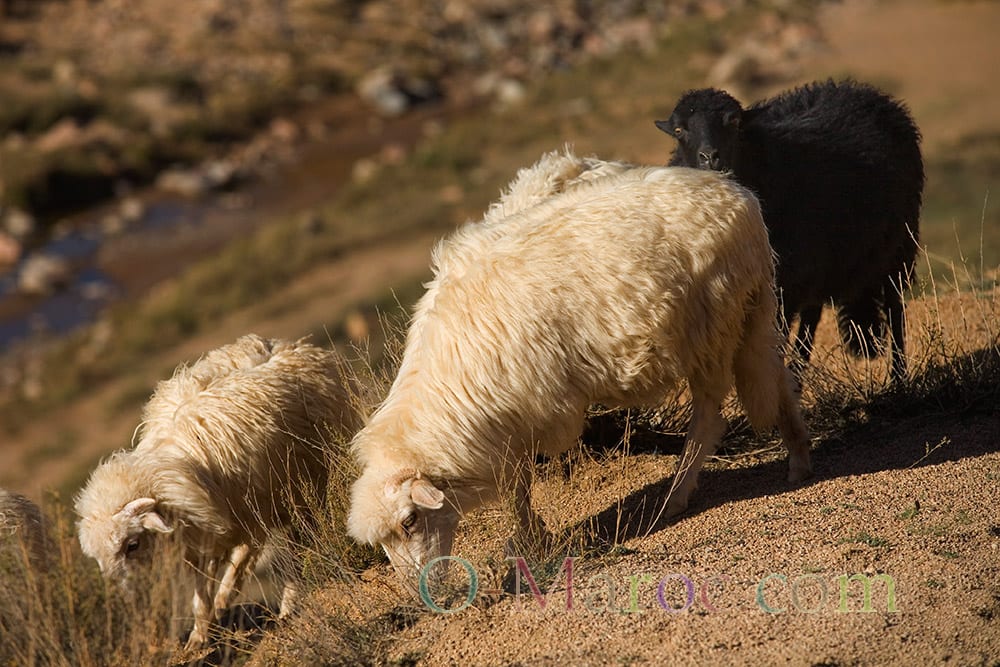
- Ulli ⵓⵍⵍⵉ refers to the ewes, but also to all the sheep in the flock.
- Tattn ⵜⴰⵜⵜⵏ refers only to ewes, and is the plural of Tilli, ⵜⵉⵍⵉ. But the Aït Moghad, who speak of Tilli, use Ulli for the plural, a word also used by the Aït Atta.
 A typo or syntax error? You can select the text and hit Ctrl+Enter to send us a message. Thank you! If this post interested you, maybe you can also leave a comment. We'd love to exchange with you !
A typo or syntax error? You can select the text and hit Ctrl+Enter to send us a message. Thank you! If this post interested you, maybe you can also leave a comment. We'd love to exchange with you !

